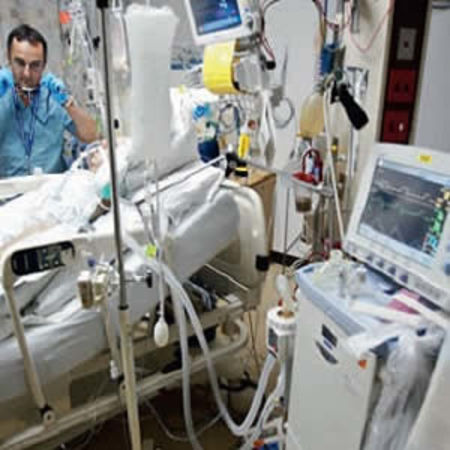Mechanical ventilation is used to decrease work of breathing. However, because complications are axiomatic to mechanical ventilation, it should be discontinued at the earliest possible time, according to a review article published in Annals of the American Thoracic Society.
The overriding objective of mechanical ventilation is to decrease work and oxygen cost of breathing, enabling precious oxygen stores to be rerouted from the respiratory muscles to other vulnerable tissue beds.
"Achieving this goal requires that cycling of the ventilator be carefully aligned with the intrinsic rhythm of a patient’s respiratory centre output," writes article author Martin J. Tobin, MD, Division of Pulmonary and Critical Care Medicine, Hines Veterans Affairs Hospital, Hines, IL.
As noted in the article, problems in aligning the cycling of a ventilator with a patient’s own rhythm of breathing may arise at three points: cycling-on (triggering), post-trigger inflation, and cycling-off (inspiration–expiration switchover). In a study of factors contributing to ineffective triggering, breaths before nontriggering attempts had a higher tidal volume (VT) and a shorter expiratory time than did the breaths before triggering attempts. In addition, some patients exhibit double triggering, where the ventilator produces two inflations within a single inspiratory effort made by the patient.
"Some might think that these triggering peculiarities are nothing more than arcane quirks; on the contrary, they have major significance and contribute to patient mortality when they go unrecognised," Dr. Tobin points out.
Consider mechanical ventilation in patients with acute respiratory distress syndrome, where a VT of 6 ml/kg has been shown to lower mortality. This setting, the author says, is so widely accepted that it has become de rigueur in protocolised management.
"Protocol advocates, ungrounded in physiology, do not recognise that low VT is necessarily accompanied by shortening of mechanical inspiratory time. Once mechanical inspiratory time becomes less than neural inspiratory time, double triggering is inevitable," Dr. Tobin explains.
Although mechanical ventilation saves lives, the author highlights it is also responsible for many deaths. Thus, it is critical to get patients off the ventilator at the earliest possible time.
To shorten ventilator time, the critical step is to screen for weanability through use of weaning predictor tests, according to Dr. Tobin. Use of T-tube trials circumvents the impossibility of estimating patient work of breathing during pressure support. Before extubation, patients should demonstrate the ability to breathe successfully in the absence of pressure support and positive end-expiratory pressure.
"Over the breadth of my pulmonary and critical care practice, no area demands greater understanding of physiological principles than ventilator management. The need for physiological understanding is greatest when facilitating expeditious weaning while minimising the risk of death," the author says.
Source: Annals of the American Thoracic Society
Image Credit: Rcp.basheer
References:
Tobin MJ (2018) Physiologic Basis of Mechanical Ventilation. Ann Am Thorac Soc. 2018 Feb;15(Supplement_1):S49-S52. doi: 10.1513/AnnalsATS.201705-417KV
Latest Articles
mechanical ventilation, ventilator time, ventilator management
Mechanical ventilation is used to decrease work of breathing. However, because complications are axiomatic to mechanical ventilation, it should be discontinued at the earliest possible time, according to a review article published in Annals of the America



























